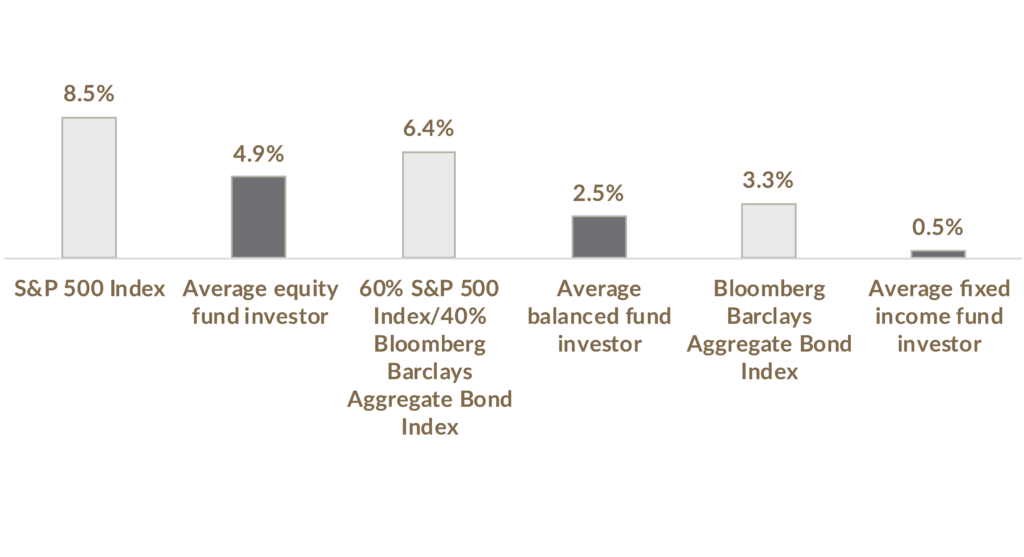The last few months of 2018 turned out to be a very volatile & negative period for all of the world’s stock markets, and every major US index was either in – or very close – to bear market territory which is defined as a decline of 20% or more from the previous high. Unsurprisingly this decline caused a massive selloff (no surprise) to the tune of $83 Billion.
Behavior like this is no different than investor behaviour during the 2008 financial crisis, or the 2010 European sovereign debt crisis, the downgrade of US debt in 2011, the fiscal cliff in 2012…. you get the picture – we’ve been through this many times before. Although most investors will agree that buying low & selling high is good in theory, this is not common practice.
We believe in buying businesses that represent good value & looking out longer than the average investor. We also believe in the value of active management. For this reason, we align all of our clients, and ourselves, with managers who consistently do what Warren Buffett advises – and that is: “Be fearful when others are greedy and greedy when others are fearful”.
It is important to realize that Investor return is not the same as investment return. Take a good look at the chart below, which is the data compiled each year by Dalbar, a firm that tracks the flow of money into, and out of various indexes which shows the annualized compound rate of return that was earned by various asset classes. Pay particularly close attention to what the average equity investor earned over this same 10 year period:
Ten-year annualized returns by Portfolio
Dec. 31, 2008 to Dec. 31, 2018

Sadly, the grotesque gap between the actual index return and investor return is always there, each and every year Dalbar compiles this data. We refer to this as “the behavioural gap” which occurs as a result of buying high & selling low – or stated differently succumbing to greed and fear. Investor behaviour is not going to change. Humans are not wired to be good stock market investors.
Every successful investor we’ve ever known has been acting continuously on a plan. Failed investors, in our experience, get that way by reacting to current events in the economy and the markets. This will never change.We are here to prevent any of our clients from experiencing anything remotely similar to the Dalbar chart above.
See below for a PDF (a 2010 Q1 commentary) by one of our managers for further reading on how the average investor tends to be his own worst enemy.

